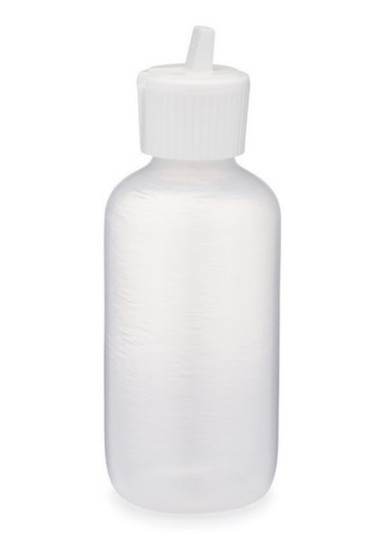Treadmill lubricant is a crucial component in the maintenance and upkeep of your home fitness equipment. This specialized liquid is designed to reduce friction, minimize wear and tear, and ensure the smooth operation of your treadmill's moving parts. However, there is an ongoing debate about the true effectiveness of these lubricants, with some users questioning whether they are truly necessary or simply a marketing ploy.
The Importance of Lubricating Your Treadmill
Proper lubrication is essential for the longevity and performance of your treadmill. Over time, the continuous movement of the belt can cause the internal components to wear down, leading to increased friction and potential damage. Without regular lubrication, your treadmill may experience a range of issues, including:
- Increased noise and vibration
- Decreased belt responsiveness
- Premature wear and tear on the motor and other critical parts
- Reduced energy efficiency
- Potential safety hazards
Regularly applying treadmill lubricant can help mitigate these problems and extend the lifespan of your fitness equipment.
How Does Treadmill Lubricant Work?
Treadmill lubricant is typically a silicone-based or oil-based solution that is designed to be applied between the treadmill belt and the deck. When applied, the lubricant creates a thin, slippery layer that reduces the friction between these two surfaces. This, in turn, allows the belt to move more smoothly and efficiently, reducing the strain on the motor and other components.
The specific formulation of treadmill lubricants can vary, with some products containing additional additives or proprietary blends to enhance their performance. However, the primary function remains the same: to keep the treadmill's moving parts well-lubricated and functioning at their best.
Common Misconceptions About Treadmill Lubricant
Despite the importance of treadmill lubrication, there are several misconceptions that have emerged over the years. Some of the most common myths include:
- Treadmill Lubricant is Optional: Many users believe that treadmill lubricant is an unnecessary expense and that their equipment will function just fine without it. However, this is a dangerous assumption that can lead to premature wear and tear on the treadmill's components.
- Any Lubricant Will Do: Some individuals believe that they can substitute treadmill lubricant with household oils or other lubricants. However, these products may not be formulated specifically for the demands of a treadmill and could potentially cause damage to the equipment.
- Treadmill Lubricant is a Scam: Some users are skeptical of the need for treadmill lubricant, believing that it is simply a marketing ploy to generate additional revenue for manufacturers and retailers.
These misconceptions can lead to neglect of proper treadmill maintenance, ultimately shortening the lifespan of the equipment and potentially creating safety hazards.
Scientific Evidence Supporting the Effectiveness of Treadmill Lubricant
Despite the common misconceptions, there is a wealth of scientific evidence that supports the effectiveness of treadmill lubricant. Numerous studies have demonstrated the following benefits:
- Reduced Friction and Wear: Studies have shown that the use of treadmill lubricant can significantly reduce the friction between the belt and the deck, leading to a decrease in wear and tear on the components.
- Improved Energy Efficiency: By reducing friction, treadmill lubricant can also improve the energy efficiency of the equipment, resulting in lower energy consumption and potentially lower operating costs for the user.
- Increased Lifespan: Properly lubricating a treadmill can extend its lifespan by up to 50%, according to some research. This is due to the reduced strain on the motor and other critical parts.
- Enhanced User Experience: With a well-lubricated treadmill, users can enjoy a smoother, quieter, and more responsive workout experience, free from the distractions of excessive noise or vibration.
These scientific findings provide a strong case for the importance of using treadmill lubricant as part of a comprehensive maintenance routine.
How to Properly Apply Treadmill Lubricant
Applying treadmill lubricant is a straightforward process, but it's essential to follow the manufacturer's instructions carefully to ensure the best results. Here are the general steps:
- Unplug the Treadmill: Before beginning any maintenance or lubrication tasks, it's crucial to unplug the treadmill from the power source to prevent any accidental starts or injuries.
- Clean the Treadmill Deck: Use a clean, dry cloth to wipe down the treadmill deck, removing any dust, dirt, or debris that may have accumulated.
- Apply the Lubricant: Carefully apply a thin, even layer of treadmill lubricant to the center of the deck, following the manufacturer's recommended amount and application method.
- Run the Treadmill: Once the lubricant has been applied, turn on the treadmill and let it run for a few minutes to allow the lubricant to disperse evenly across the belt.
- Wipe Away Excess: After the initial run, use a clean cloth to wipe away any excess lubricant that may have accumulated on the sides of the belt or the deck.
It's important to note that the frequency of lubrication will depend on the manufacturer's recommendations and the intensity of use. Most treadmill manufacturers suggest lubricating the equipment every 3-6 months, or more often if the treadmill is used extensively.
Tips for Maintaining Your Treadmill
Proper treadmill maintenance goes beyond just lubrication. Here are some additional tips to help keep your fitness equipment in top condition:
- Regular Cleaning: Wipe down the treadmill's exterior and interior surfaces regularly to remove dust, sweat, and other debris that can accumulate over time.
- Belt Tracking Adjustments: Periodically check the alignment of the treadmill belt and make any necessary adjustments to ensure it remains centered and tracking correctly.
- Motor and Part Inspections: Regularly inspect the treadmill's motor, rollers, and other critical components for any signs of wear or damage, and replace them as needed.
- Manufacturer Recommendations: Always refer to the treadmill manufacturer's instructions for specific maintenance and care guidelines, as these may vary depending on the model and brand.
By following these maintenance tips, along with a regular lubrication schedule, you can help extend the lifespan of your treadmill and ensure a safe, enjoyable workout experience.
Treadmill Lubricant Alternatives
While treadmill lubricant is the recommended solution for maintaining your fitness equipment, there are a few alternative options that some users may consider:
- Silicone Spray: Some users have reported success using silicone-based spray lubricants designed for other applications, such as garage doors or hinges. However, it's important to ensure that the product is compatible with the materials used in your treadmill.
- Household Oils: As mentioned earlier, it's generally not recommended to use household oils, such as vegetable or motor oil, as a substitute for treadmill lubricant. These products may not be formulated for the specific demands of treadmill use and could potentially cause damage to the equipment.
- Dry Lubricants: Some treadmill models may be compatible with dry lubricants, such as powdered graphite or Teflon-based products. These can be a viable alternative in some cases, but it's essential to consult the manufacturer's recommendations before using them.
It's important to note that while these alternatives may work in some cases, they may not provide the same level of protection and performance as a dedicated treadmill lubricant. For the best results, it's generally recommended to use the lubricant recommended by the treadmill manufacturer.
Reviews and Testimonials from Treadmill Users
As with any product, the real-world experiences of treadmill users can provide valuable insights into the effectiveness of treadmill lubricant. Here are some examples of what users have reported:
"I've been using the treadmill lubricant recommended by the manufacturer, and it's made a huge difference in the smoothness and responsiveness of my treadmill. I no longer hear the annoying squeaks and creaks that used to drive me crazy during my workouts."
"After neglecting to lubricate my treadmill for a few years, I started to notice a significant decrease in performance and an increase in noise. Once I finally got around to applying the lubricant, it was like my treadmill was brand new again. Definitely a worthwhile investment!"
"I was skeptical about the need for treadmill lubricant at first, but after reading the reviews and doing some research, I decided to give it a try. I'm so glad I did – the difference in the smoothness and overall feel of my treadmill is remarkable. It's a small price to pay for the longevity of my fitness equipment."
These testimonials, along with the scientific evidence presented earlier, suggest that treadmill lubricant can be a highly effective tool in maintaining the performance and lifespan of your home fitness equipment.
Conclusion: The Verdict on Treadmill Lubricant Effectiveness
In conclusion, the evidence overwhelmingly supports the effectiveness of treadmill lubricant in maintaining the performance and longevity of your fitness equipment. By reducing friction, improving energy efficiency, and extending the lifespan of critical components, treadmill lubricant plays a vital role in ensuring a safe, enjoyable, and long-lasting workout experience.
While there may be some misconceptions and alternative options available, the scientific data and user testimonials clearly demonstrate the benefits of regularly lubricating your treadmill. By following the manufacturer's recommendations and incorporating treadmill lubrication into your maintenance routine, you can help ensure that your fitness investment continues to serve you well for years to come.


